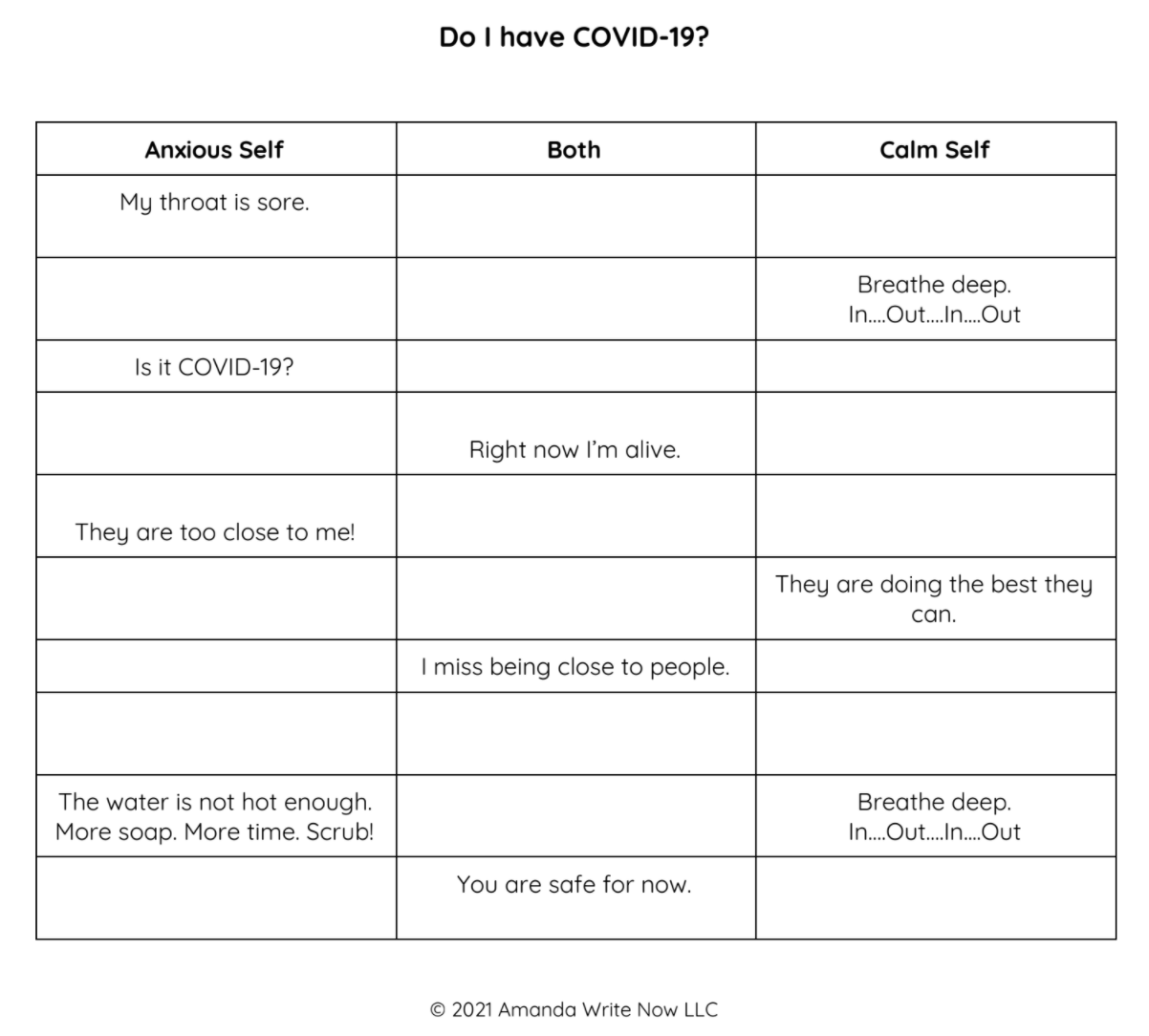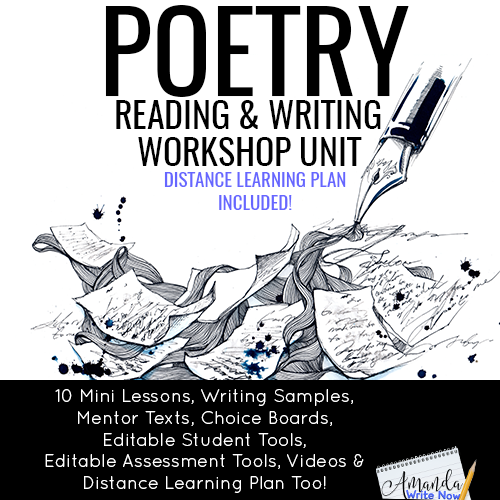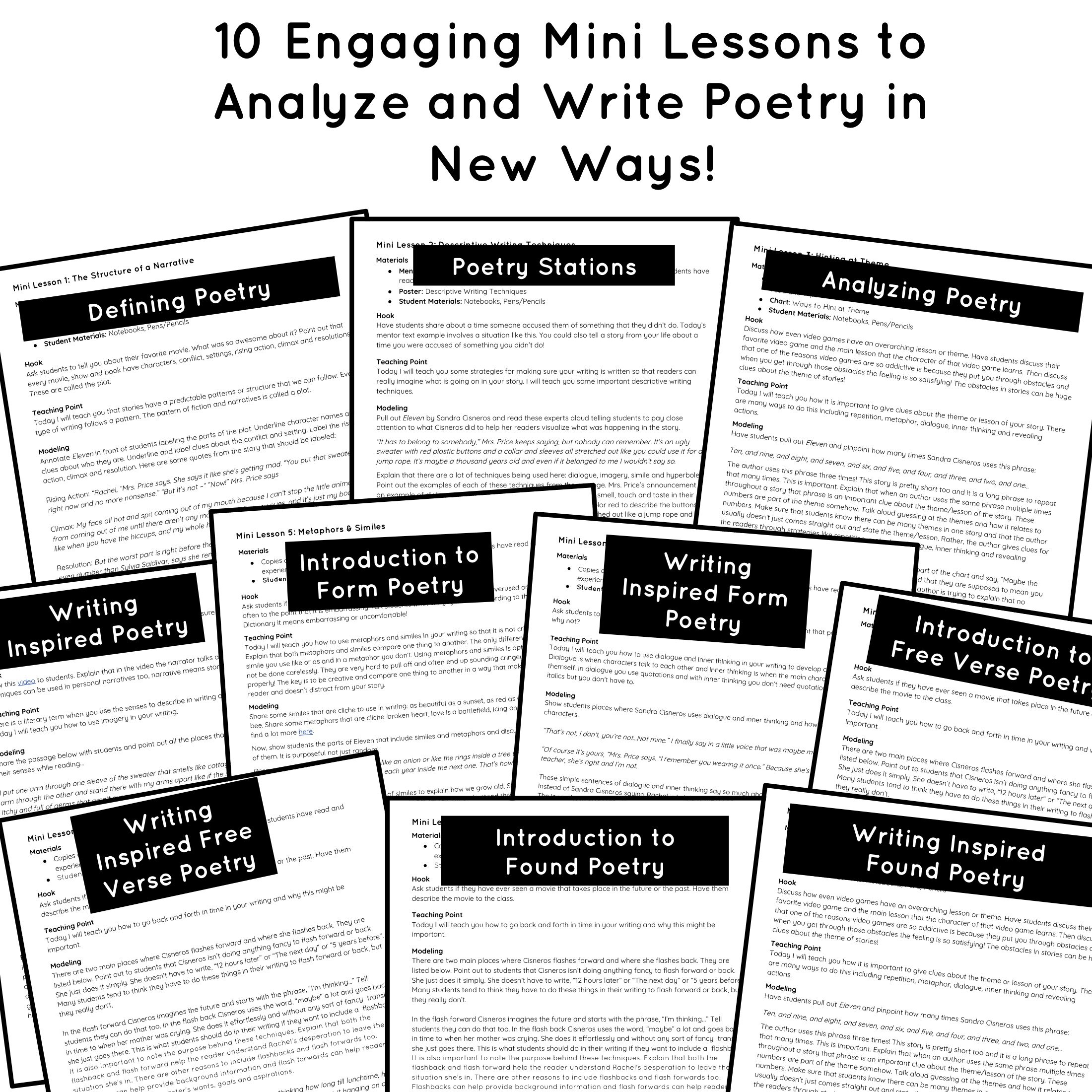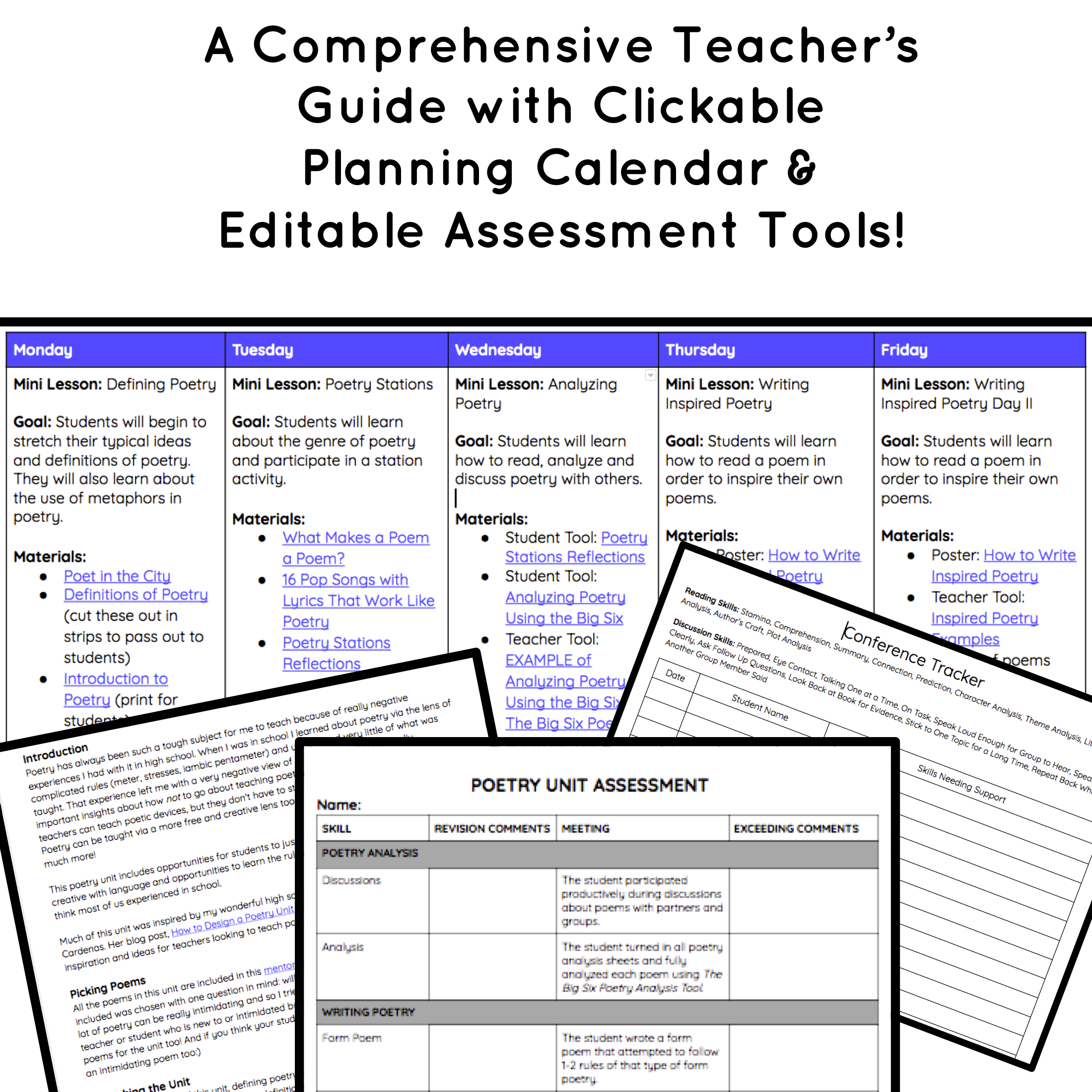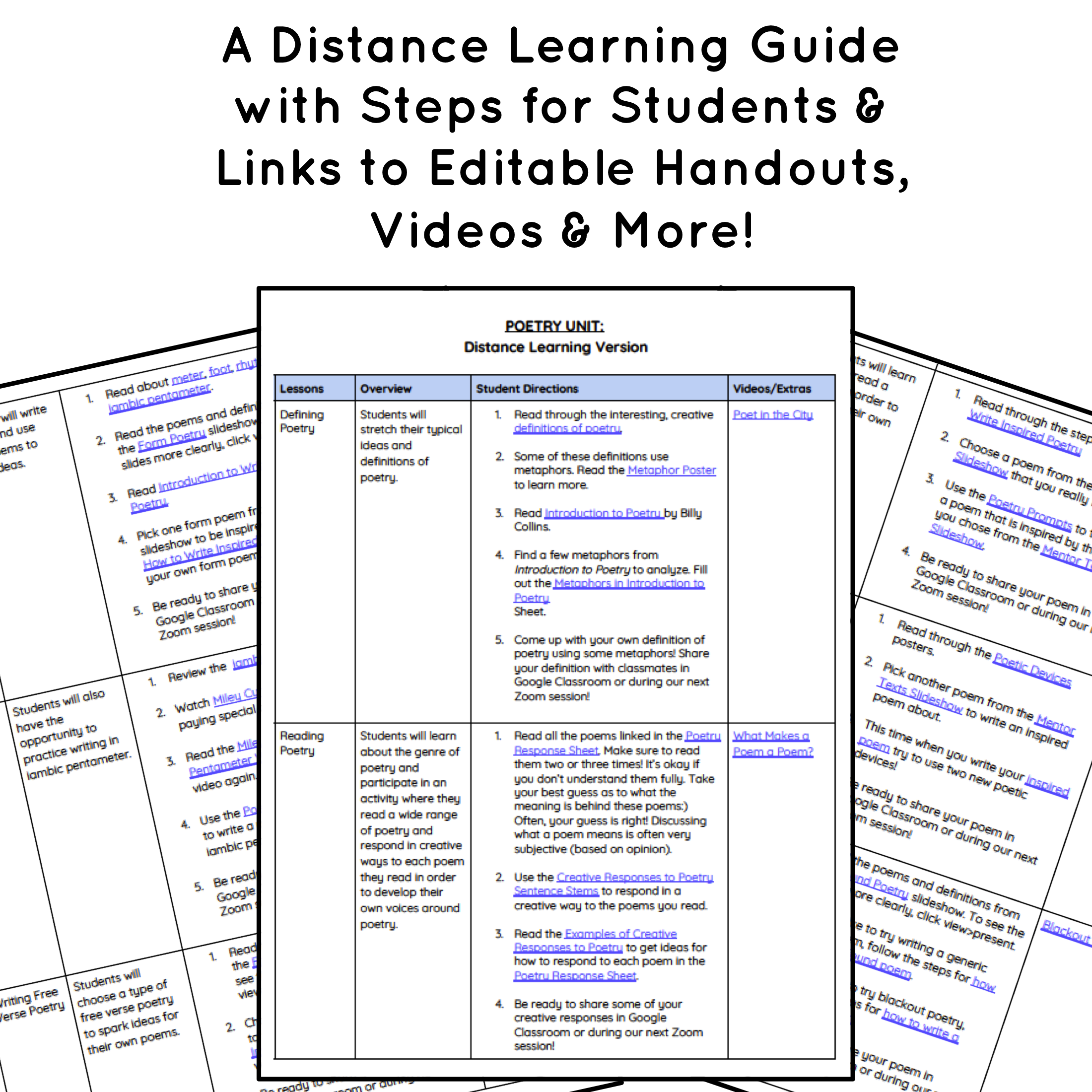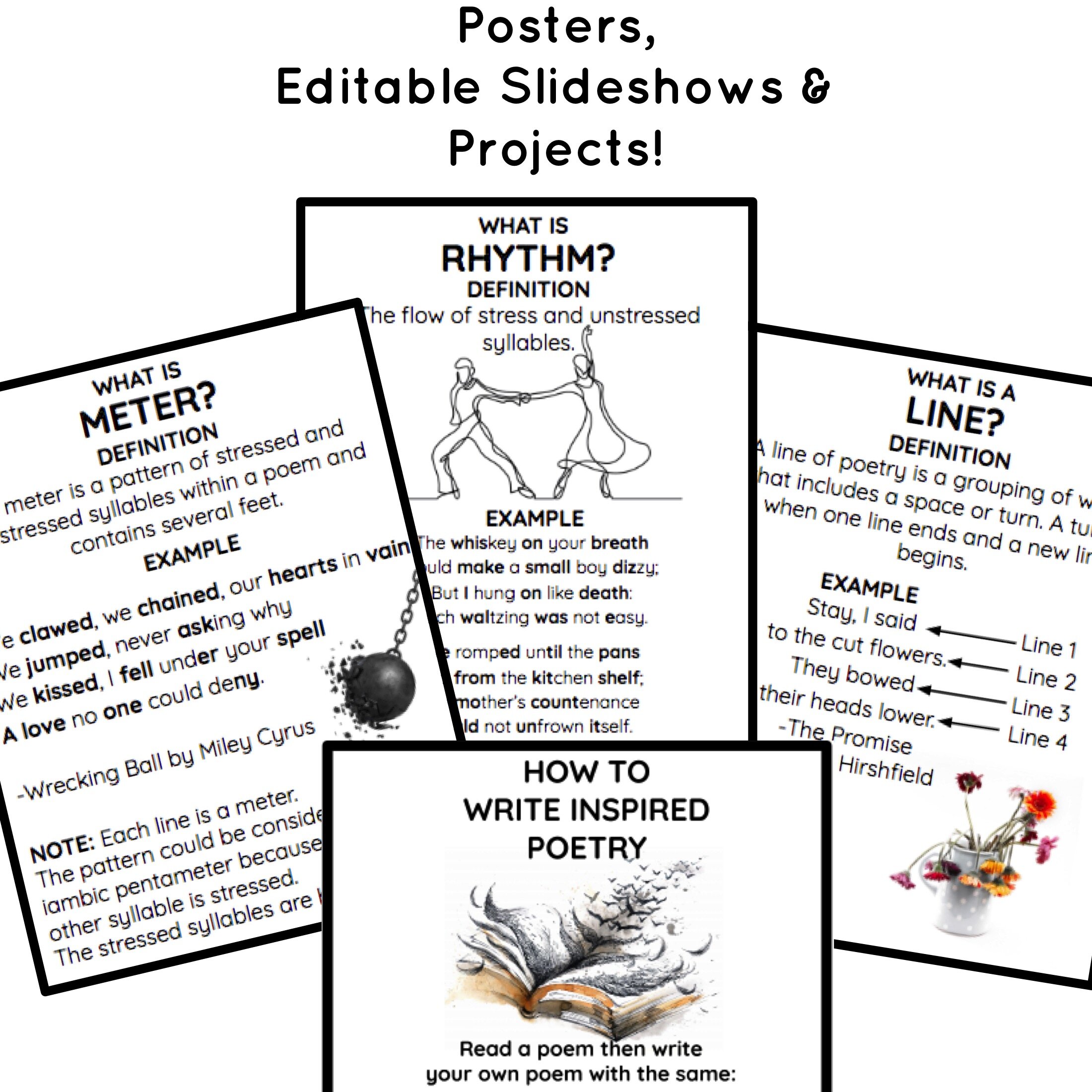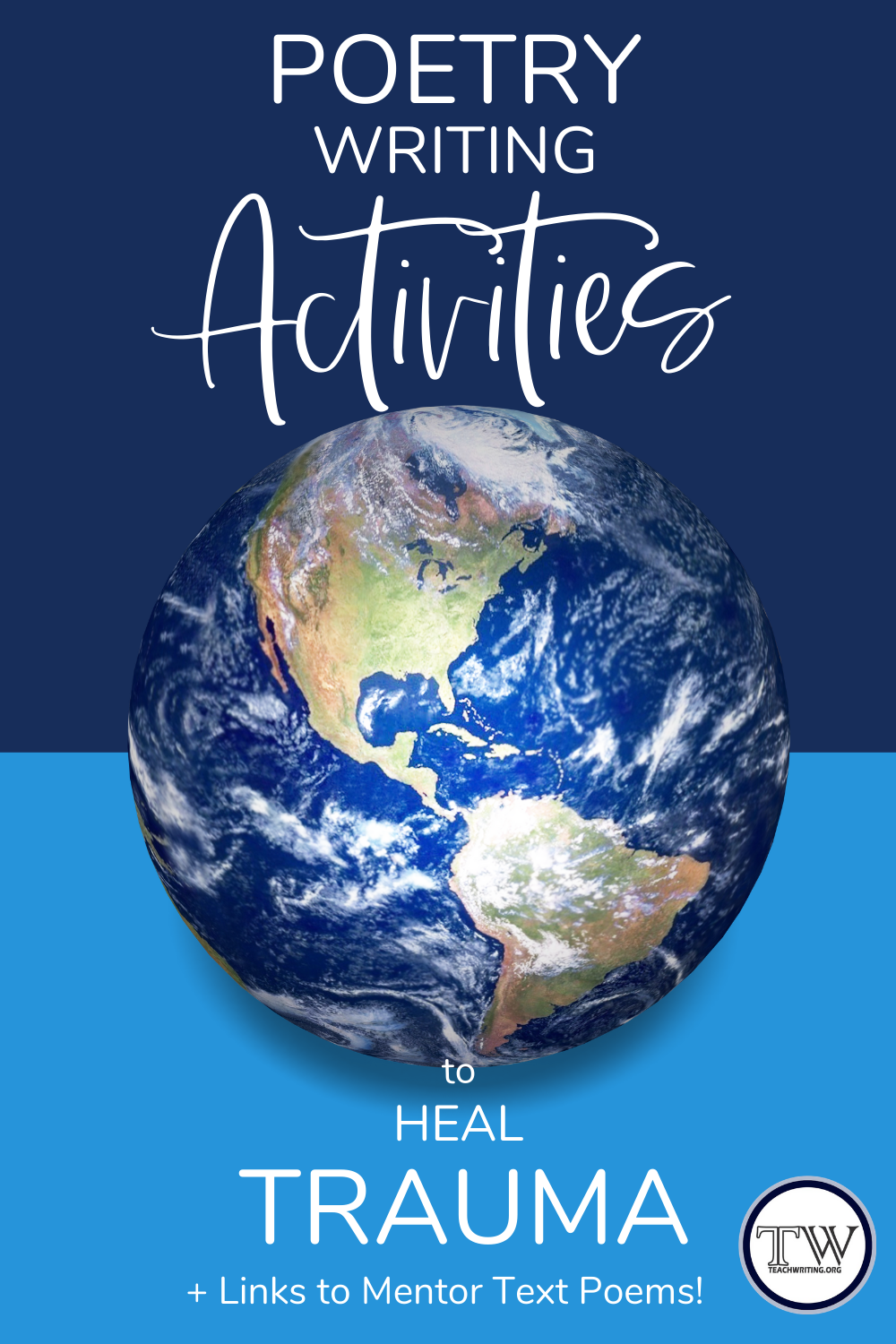5 Poetry Activities to Heal Trauma
“Poetry provides us with the history of the human heart.”
The entire world has been traumatized. Amidst a pandemic, many other tumultuous events have occurred. Most teachers I know are wondering how to make room for all this in their classrooms. Some may be wondering, should I just plow forward with content?
Absolutely not.
First of all, we can’t ignore how hard things have been. We need to make room in our classrooms for the pain. One of the best ways to let our emotions, thoughts and experiences flow is by writing.
I believe we have a responsibility as English teachers to harness our subject area as an outlet for students to heal.
Poetry in particular allows humans to distill emotions and difficult experiences into well chosen words. Writing poetry during challenging times not only makes way for the purging of the tough stuff, it also bonds humans more closely together.
This is exactly why I’m writing this blog post. Below you’ll find five poetry writing activities that I hope will help you begin to plan for this work with your students. But, before you dive into the activities below please know this…
I hope that this blog post will help you heal too. Teachers are so self sacrificing and they forget to take care of themselves first. You can use poetry to heal, even if you don’t think you have any writing abilities. I can relate, I’ve felt the same way about my abilities. At some point we need to ignore the critical voice inside our heads. Once we do that, you know what? You’ll be delighted and surprised at how effortless and freeing poetry writing can be when you aren’t worried about doing it “right”. Try it out, you’ll see. So, before doing these five healing poetry activities, I urge you, try them yourself first.
1. Concrete Feelings Poetry
Feeling words are abstract…sad, angry, overwhelmed. These words just don’t cut it when trying to explain how we are feeling. This activity can help you and your students turn abstract feeling words into concrete imagery.
Here’s how this activity might go…
First, explain that “abstract” means an idea that we can’t see, hear or touch such as the words happy or sad.
Next, write an abstract feeling word for all students to see, such as depressed.
Circle the word and then draw lines out from the circle.
Write other words next to the lines that help students see what depressed might look like. Words that make the idea of depressed more concrete and felt with the senses.
You might write words or phrases such as blue, tears, dark clouds, never ending tunnel, alone, shriveling flower, crows, worms…you get the idea. You could also ask student volunteers to add words and phrases.
Finally, model using the words and phrases to write a free verse poem in front of students. Explain that free verse is poetry without restrictions or rules. The goal is to write a poem that helps readers see the feeling word in a concrete, sensory way. See the example above.
2. EmulatION POETRY
Poetry can be intimidating for students and teachers. But, it doesn’t have to be if you use poems that can be easily understood and related to. Doing a quick search of “slam poetry” or “rap songs” will give you lots of relatable poems to choose from! You could even emulate your favorite song.
Once you you have a poem you know students will get into, teach them about emulation…
Emulation is one of the best ways to get students started with writing powerful poetry that heals.
What is emulation? It is not copying!
It is being inspired by parts of a poem and using parts of the poem as a jumping off point for writing new, creative poetry of your own. The poster to the right explains different parts of a poem that students can emulate.
An emulation poetry activity could go something like this…
Tell students what emulation is…it is using writing by another author to inspire your own writing.
Model emulating a relatable poem in front of students by choosing just one aspect of the poem you will keep the same (use the poster to pick a few aspects you will keep the same).
Deviate by inserting your own creativity and experiences into your new poem. Remember to keep the one or two aspects you chose from the original poem the same. Where I Am From by George Ella Lyon is a popular poem that inspires many emulation spin offs. This poem by Yeskia Salgado might have been one of those spin offs, but I’m just guessing here: A Salvadoran Heart.
3. Conflicting Voice Poetry
Often when humans go through something traumatic there are many thoughts swirling around about what happened. Our minds are trying to make sense of things, to tell a story in order to cope. Often there are conflicting stories being told in the mind. There might be one voice saying one thing about the incident and another voice saying something opposing. Here lies the power of conflicting voice poetry. This activity allows the two voices to come out into the open, to be analyzed and seen so we can better understand what’s going on inside. Here’s how a two conflicting voice poetry activity might work…
Choose a topic you feel conflicting emotions about or that you feel confused about. The example two voice poem to the right is about COVID-19 and was written at the very beginning of the pandemic.
Create a three column table like the one to the right. In the far left column describe one side of yourself or one emotion you feel about the confusing or conflicting topic. In the far right column describe the other side. In the middle column write the word “both”.
Model filling out the table in front of students then have them try it out with a topic of their choosing. The topic could be anything, such as the conflicting emotions they have about a friend or family member, the conflicting emotions they have about a sport or politics or a genre of music…these poems can be about anything.
4. Validation Poetry
Every night before bed I tell my six year old daughter three things…you are kind, you are strong and you are so beautiful. After many months of doing this, she wanted me to add funny. So, now I tell her four things:) Children are so impressionable and this is why it is incredibly important for adults to tell children specific positive attributes they see in them beyond doing school work or complying with your demands.
This poem is from a beautiful book of poems called Corazon by Yesika Salgado
Human brains hold so tightly to negativity. The children in our care deserve to hear about the beauty we see in them. One way we can do this is through validation poetry. There’s so much poetry out there that serves to validate the human experience. To the left is one of my favorites from a book called Corazo`n by Yesika Salgado (this is an Amazon Affiliate link which means if you purchase this book, I will receive a commission at no extra cost to you). Try starting validation poetry by having students write an emulation poem using Our Laughter by Salgado. Remember emulation is discussed in activity #2.
Here are some other ideas about how you might get students writing their own validation poetry…
Have students choose to write multiple validation poems. One can be dedicated to someone in their life that they care about. The second can be about themselves. The purpose of both poems is to validate. Explain that validate means to see the value in someone.
Start your first poem with one simple phrase, “I see you”.
Then, every line after that start with the phrase, “I see…”
Write anything that comes to mind about the person you are writing about. Tell that person why you value them.
Finish the poem with a line that completes the phrase, “You deserve…”.
After writing a poem about someone else, write a validation poem for yourself, this time start with, “Do you see me?”.
Each line after that will start with, “Do you see…?”. Write about yourself in a way that shows you value all the parts of you.
To the right is an example of a validation poem I wrote for my six year old daughter:) It’s always fun to add art work to go along with poems too! I used an iPad app called Sketchbook Pro and my Apple Pencil to create this.
5. SPoken WOrd POETRY
There are no rules when it comes to spoken word poetry (a.k.a slam poetry) and it is written with the intention of sharing out loud to an audience. But, some students might not be comfortable sharing their poems in written form, let alone out loud. This is why I recommend only having students share their poems if they are comfortable.
Here are some ideas for how to use slam poetry for healing in your classroom…
Show students videos of slam poetry performances. Check out my favorite slam poetry performances here.
You might also want to pick a slam poem that is in text form to read aloud to students. Here’s a slam poem called, Totally Like Whatever, You Know? in text form and here is the emulation of this same poem about the pandemic.
Try modeling the emulation process of a slam poem of your choosing. When you emulate, keep one or two aspects of the slam poem the same (topic/idea, first line, last line, number of stanzas, the rhyming pattern, the number of lines, the tone, poetic devices etc.). Then, insert your own words, ideas and stories into your poem.
As you write, if you think of new ideas and want to cross things out, go for it! Students need to see the messy process of drafting any poem.
Model reading your draft slam poem out loud from time to time. Explain to students that if they plan to read their poem to an audience, it’s important to test out how the poem sounds out loud. Cross out and add new words as you see fit. Writing poetry can be messy!
Finally, allow student volunteers the opportunity to share their poems out loud. You might also tell students that if peers agree, students can read each others’ slam poems, after practicing of course. Sometimes it’s less pressure when someone else reads your poem for you.
Amanda Werner has been teaching for 13 years and still feels like a novice. Every year is a unique and exciting challenge to inspire a new group of students to become avid readers and writers. Amanda reads educational literature voraciously and writes about the teaching of reading and writing on her website amandawritenow.com. Amanda received her B.A. in English Literature with an emphasis in Humanities at Western Washington University. In her free time, Amanda loves being outdoors with her husband and daughter.




